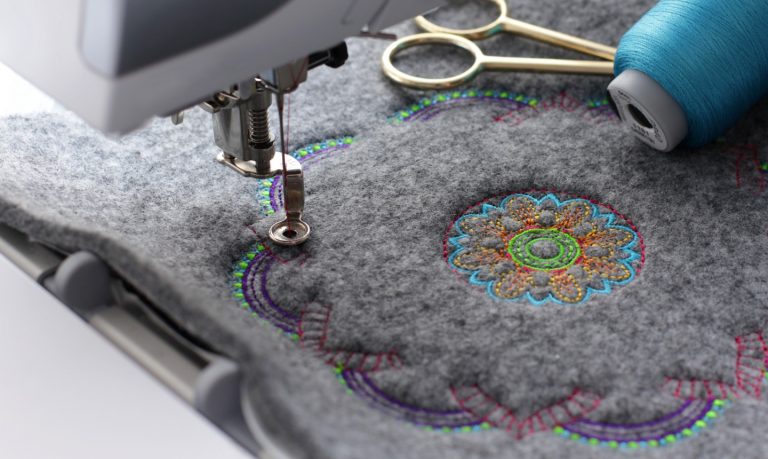Custom Digitizing for Embroidery: Customized to Your Needs
Custom Digitizing for Embroidery: Customized to Your Needs
Blog Article
Grasping the Needlework Digitizing Process: Your Ultimate Guide
Needlework digitizing is a thorough craft that requires precision and know-how to convert detailed layouts right into electronic layouts for equipment needlework. As craftsmens get started on this trip to master the needlework digitizing process, a comprehensive understanding of the fundamentals sets the foundation for excellence.

Understanding Embroidery Digitizing Fundamentals
Needlework digitizing essentials form the foundation whereupon complex designs are equated right into machine-readable styles for accurate stitching. This preliminary action in the embroidery digitizing process is vital for making certain that the last embroidered item is a devoted representation of the initial layout. Recognizing needlework digitizing fundamentals includes comprehending key concepts such as stitch types, stitch instructions, thickness, underlay, and pull compensation.
Sew kinds play an essential function in figuring out the visual and textural outcome of the embroidered layout. By picking the proper stitch type, whether it be satin, fill, or running stitch, digitizers can achieve the wanted result and boost the general high quality of the embroidery. In addition, sew direction affects the circulation and dimension of the design, while thickness figures out the spacing and coverage of the stitches.
Additionally, padding stitching provides stability to the design by protecting the textile and stopping distortion during the embroidery procedure. Pull compensation is another essential factor to consider to combat the all-natural tendency of fabric to agreement when stitched. Grasping these embroidery digitizing essentials is fundamental for developing professional-quality embroidered items.
Choosing the Right Digitizing Software Application
Picking the appropriate digitizing software application is a crucial choice that dramatically impacts the effectiveness and top quality of the needlework digitizing process. Digitizing for Embroidery. When selecting the ideal digitizing software, it is necessary to take into consideration aspects such as the intricacy of layouts you plan to create, the user-friendliness of the software application, the degree of consumer assistance offered, and the compatibility with your embroidery device
There are different digitizing software application choices offered in the marketplace, ranging from basic programs for novices to advanced software application for specialist digitizers. Some popular selections consist of Wilcom EmbroideryStudio, Hatch Needlework Software Program, and PulseID. These software provide a broad variety of tools and functions to help you create elaborate designs easily.
Before making a decision, it is advisable to discover the different software application choices through totally free trials or demos to establish which one ideal fits your requirements. Furthermore, reading reviews and looking for referrals from knowledgeable digitizers can offer valuable insights right into the staminas and weaknesses of each software (Digitizing for Embroidery). By very carefully examining your demands and comparing the Check This Out attributes of different digitizing software, you can make an enlightened option that enhances your needlework digitizing operations
Digitizing Tools and Techniques

Optimizing Design Settings for Needlework
Grasping the ins and outs of style setups is fundamental in attaining ideal results in the needlework digitizing procedure, building upon the structure laid by recognizing digitizing devices and methods. When optimizing design settings for embroidery, it is essential to think about variables such as stitch type, density, padding, draw payment, and enrollment. Registration setups align different elements of the design precisely, maintaining general layout honesty.

Troubleshooting Common Digitizing Issues
When coming across common digitizing problems during the embroidery procedure, it is necessary to understand the origin causes and carry out efficient services without delay. One typical problem is stitch density problems, where stitches might be too thick, creating the fabric to tighten, or too get more sporadic, bring about gaps in the style. Readjusting the stitch density setups in the digitizing software application can aid resolve this issue.
Another frequent difficulty is thread breaks throughout the embroidery procedure. This can occur as a result of numerous reasons such as inaccurate tension setups, plain needles, or making use of low-grade thread. Making certain proper upkeep of the embroidery maker, including routine needle changes and tension adjustments, can reduce the occurrence of string breaks.
Additionally, style enrollment errors can cause misaligned elements within the needlework design. Inspecting the design placement in the digitizing software and making required changes prior to stitching can assist in avoiding this issue. By addressing these usual digitizing issues quickly and efficiently, you can make sure a smoother needlework process and premium completed items.
Verdict
Finally, grasping the needlework digitizing procedure needs a solid understanding of the fundamentals, the best choice of software, and expertise of devices and methods. Enhancing design settings and repairing typical digitizing issues are essential action in ensuring top notch needlework outcomes. By following these steps faithfully, one can accomplish precision and performance in the digitizing procedure.
Report this page